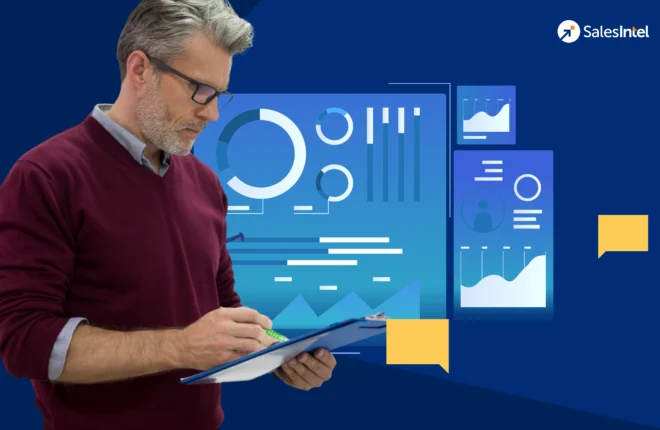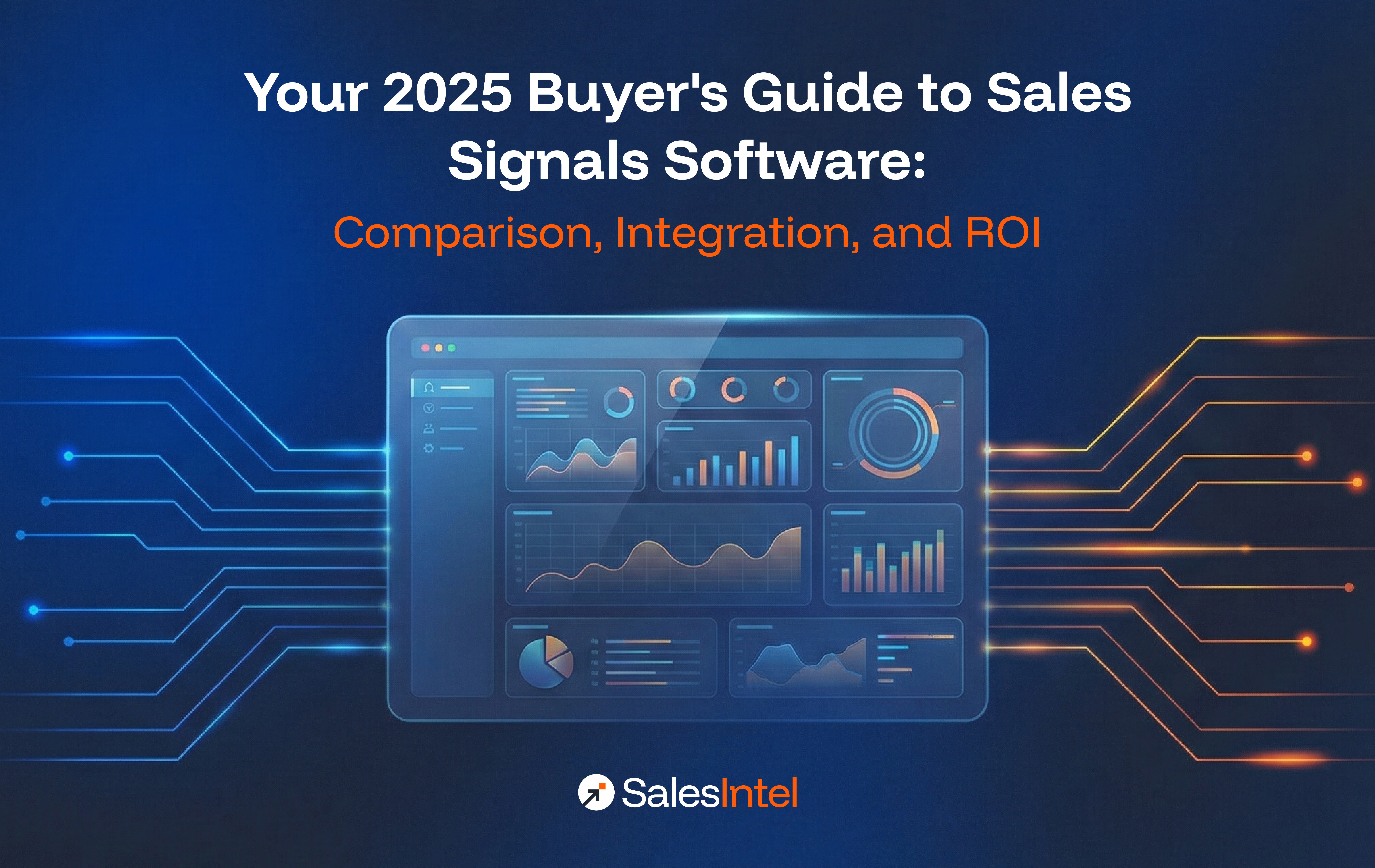As the final quarter of 2024 approaches, B2B sales teams are refining their strategies to meet their goals. With shifting market dynamics, rapid technological advancements, and heightened buyer expectations, accurate sales forecasting has become essential for navigating the path ahead. This year, sellers have been empowered by key trends that blend innovation with data-driven precision, helping them overcome the odds and make more confident, proactive decisions. Here’s a look at five transformative trends that reshape Q4 sales forecasting – providing the insights needed to close the year strong.
How Q4 Sales Forecasting Planning Often Starts
Q4 planning in B2B sales is often chaotic. Many companies scramble to meet quotas left from earlier quarters, while also trying to close deals and hit the ambitious targets set for Q4. This rush often creates blind spots, leading to oversights that hinder effective planning. Here are some common challenges that arise:
- Lack of Transparency
With teams spread thin, there’s often little clarity about each team’s contributions toward the overall goal. When communication breaks down, teams operate in silos, unaware of how their performance impacts other parts of the organization. Transparency is crucial for keeping everyone aligned and aware of their roles in the bigger picture.
- Lack of Collaboration
The pressure to meet targets can lead to a narrow, team-focused approach instead of a collaborative effort. Sales and marketing may not share critical insights, or finance and operations may not be fully briefed on the sales strategy. Without collaboration, valuable opportunities for synergy are missed, and efforts become duplicated or misaligned.
- Lack of a Data-Driven Approach
In a rush to set targets and plan activities, companies often rely on assumptions rather than data. Sales forecasting and planning without leveraging current data, market trends, and AI-driven tools can lead to inflated goals and a skewed sense of what’s achievable. Sales leaders risk setting unrealistic expectations that don’t account for recent changes in buyer behavior or competitive landscape.
How Q4 Planning Often Ends
Without addressing these initial gaps, planning in Q4 can result in challenges that limit success. Here’s how typical Q4 planning misfires:
- No Proper Understanding of Goals:
When goals aren’t clearly communicated or grounded in realistic data, teams struggle to understand what’s expected. Without a shared understanding, individuals may feel disconnected from the company’s objectives, leading to confusion and lack of motivation.
- No Buy-In:
Effective planning requires the full buy-in of all stakeholders. When transparency and collaboration are lacking, teams may not feel ownership of the goals. They become reluctant to invest the effort needed, viewing Q4 targets as directives rather than shared ambitions.
- Unrealistic Goals:
When planning is rushed and data isn’t adequately considered, goals can easily become unrealistic. Without achievable targets, teams can feel overwhelmed and lose momentum, making it harder to stay motivated and perform well. Unrealistic targets also risk eroding trust between leadership and sales teams.
A Different Way to Plan for Q4 Success
To set B2B sales teams up for success, consider an alternative Q4 planning approach that balances ambition with realism. This approach emphasizes transparency, data, and a collaborative process to create a roadmap that teams can trust and follow.
- Start with Believable Pipeline Targets:
Establish realistic pipeline targets based on data, historical performance, and current market conditions. This is crucial for motivating sales teams with goals they believe they can achieve. Grounding targets in reality, while still stretching for growth, increases buy-in and engagement from all teams.
2. Build a Pipeline-to-Bookings Model:
A pipeline-to-bookings model maps out the flow from initial lead generation to closing deals. This helps teams visualize the steps needed to meet revenue targets and allows leaders to track progress accurately. By mapping out each stage, teams gain clarity on how much pipeline needs to be generated, converted, and closed.
3. Align Leaders for Ownership:
Ensure that all leaders, from sales to marketing to operations, are aligned on Q4 goals. Each leader should understand their team’s specific targets and feel responsible for their role in achieving the collective goal. This alignment fosters accountability and ensures that everyone pulls in the same direction.
4. Roll Out with Transparency:
When the plan is complete, roll it out with full transparency. Clear communication on targets, expectations, and performance tracking helps every team member understand their contribution. Regular updates allow everyone to stay informed, reducing ambiguity and empowering teams to adjust their strategies if needed.
5. Tweak and Adjust:
The most successful Q4 plans are dynamic. As the quarter progresses, gather feedback and insights from teams on what’s working and what’s not. Adjust strategies to address challenges and take advantage of emerging opportunities. Flexibility keeps teams agile and responsive, increasing the likelihood of achieving targets.
5 Trends That Will Help Sellers Overcome the Odds in 2024
Let’s emphasize each trend’s role in overcoming sales challenges this year in Q4:
1. Data-Driven Decision Making
Data-driven decision-making has become a linchpin of B2B sales strategy, as it allows teams to refine every aspect of their approach. AI and machine learning provide access to deep, actionable insights derived from vast datasets, giving sales teams a competitive advantage by enabling them to identify trends and act on them quickly.
- Personalized Engagements at Scale:
With granular insights into customer behavior, sales reps can deliver hyper-personalized experiences for each prospect. By analyzing purchase histories, engagement patterns, and even specific pain points, AI helps sales teams focus on individual customer needs. This personalization increases the likelihood of conversions and fosters stronger, long-term relationships with clients.
- Proactive Resource Allocation:
Data-driven insights help teams prioritize high-value accounts and allocate resources more effectively. Instead of treating all leads equally, sales reps can identify and target those most likely to convert based on a data-backed understanding of client needs. This ensures that time and effort are spent where they have the highest potential impact.
- Real-Time Adaptation to Market Shifts:
Market dynamics can shift rapidly, and data-driven decision-making enables sales teams to stay agile. For instance, if there’s a sudden spike in interest in a particular service or product, AI-powered tools can detect this and alert the team. This agility helps B2B sellers capture opportunities in real-time, gaining an edge in the market.
2. AI-Powered Sales Forecasting Tools
AI-powered sales forecasting tools have become indispensable for B2B sales, delivering a level of accuracy and adaptability that traditional forecasting methods can’t match. These tools enable sales teams to make data-informed decisions based on a combination of historical trends, real-time data, and external market signals.
- Precise Forecasting with Fewer Errors:
AI-powered sales forecasting tools provide highly accurate predictions by processing large volumes of historical and real-time data. This reduces the likelihood of human error and provides a more reliable basis for decision-making. Teams can rely on these forecasts to set realistic quotas and allocate resources effectively, even in complex and changing environments.
- Adaptability to Changing Variables:
AI algorithms can dynamically adjust to changes in buyer sentiment, market conditions, and competitive movements. For instance, if there’s a seasonal shift in purchasing behavior, the algorithm can pick up on this and adjust sales forecasts accordingly. This adaptability is particularly important for B2B teams working in fast-evolving sectors.
- Pattern Recognition and Opportunity Spotting:
AI-powered tools can uncover patterns and trends within datasets that may indicate emerging opportunities or shifts in customer interest. For example, if AI detects increased engagement from a specific industry or region, sales teams can pivot their efforts toward these high-potential areas, seizing opportunities that might otherwise go unnoticed.
3. Nearbound Selling
Nearbound selling is an innovative approach that leverages existing networks and partnerships to reach high-potential clients, moving beyond traditional cold outreach. By targeting prospects within a business’s ecosystem, sales teams build on a foundation of trust, which is particularly valuable in today’s challenging B2B sales landscape.
- Leveraging Familiar Networks:
Nearbound selling focuses on reaching out to contacts within the organization’s extended ecosystem, such as past clients, partners, or companies associated with existing clients. This approach bypasses cold outreach and connects with leads already familiar with the brand, increasing the chances of conversion.
- Strengthening Credibility and Trust:
Relationships with nearbound prospects are generally easier to nurture because they’re built on prior associations or shared networks. For B2B buyers, this familiarity can expedite trust-building and make them more open to conversation. Sellers benefit from the credibility gained by association, which helps accelerate the sales process.
- Cost-Effectiveness:
Acquiring new leads can be expensive and time-consuming, especially in competitive markets. By focusing on nearbound accounts, sales teams reduce acquisition costs while increasing efficiency. Nearbound selling is thus both a high-impact and resource-friendly approach, allowing B2B sellers to close deals faster.
4. The Return of the Telephone
Amidst digital transformations, the telephone is regaining prominence as a powerful tool for personal connection in B2B sales. While emails and digital communications remain crucial, the direct and conversational nature of phone calls offers unique advantages in relationship building and client engagement.
- Building Personal Connections:
Phone calls allow for immediate, personable interactions that can’t be easily replicated via email or chat. For B2B clients who may feel inundated by digital messages, a phone call can stand out as a more genuine, human way of communication. This helps in building rapport and making clients feel valued.
- Timely Check-Ins and Quick Resolutions:
For quick updates, reminders, or problem-solving, the phone is often faster and more effective. Sales reps can address concerns, answer questions, or provide information in real-time, which can be particularly valuable in high-stakes or time-sensitive deals. This real-time interaction helps create a more responsive client experience, fostering loyalty.
- Reduced Communication Fatigue:
While email overload is a common issue in the business world, phone calls can provide a refreshing alternative that is less likely to be ignored. For clients inundated with digital communication, a quick, personalized call can offer a welcome reprieve, signaling attentiveness and responsiveness from the sales team.
5. AI-Driven Search Alternatives
AI-driven search alternatives are transforming prospecting by making it faster and more precise. Instead of relying on traditional search, which can be time-intensive, AI-powered algorithms identify high-potential companies and individuals based on behavioral patterns, industry-specific data, and real-time intent signals.
- Precision Prospecting:
AI algorithms can pinpoint prospects by analyzing patterns across industries, geographies, and company profiles. This allows sales teams to identify companies that are not only similar to their best clients but also show signs of being ready to buy. Precision prospecting saves time and ensures outreach efforts are focused on the most relevant targets.
- Buyer Intent Analysis:
AI-driven tools analyze a range of factors, from content engagement to purchasing signals, helping sales teams identify prospects demonstrating interest in products or services similar to what they offer. By knowing who is actively searching for solutions, sellers can approach leads at the right time, increasing conversion rates and shortening sales cycles.
- Proactive Prospecting:
Instead of passively waiting for prospects to search for a company’s products or services, AI helps sales teams proactively reach out to high-potential leads. By shifting from reactive to proactive prospecting, B2B sellers can create a more predictable sales pipeline, maintaining steady momentum even as the market evolves.
Supporting Trends to Watch
These core trends are complemented by other supporting trends that further shape the future of B2B sales.
- Omnichannel Sales Approach:
Buyers now interact across multiple channels, so B2B sellers must deliver consistent messaging on every touchpoint. An omnichannel approach, encompassing email, social media, phone, and in-person meetings, increases engagement and ensures that no matter where prospects are, they receive a cohesive experience.
- Enhanced Account-Based Marketing (ABM):
ABM is shifting from a broad approach to a more customized one, with hyper-targeted campaigns aimed at key accounts. This targeted focus allows B2B sellers to create tailored solutions that directly address the specific needs of their most valuable clients.
- Digital Self-Service and Personalization:
As digital channels become dominant, self-service options and personalized experiences are key. B2B buyers appreciate the ability to explore solutions on their own terms, and companies that offer these options can expect higher engagement and conversion rates.
Together, these trends reflect a B2B sales forecasting approach that is not only highly accurate and data-rich but also deeply customer-centric, focused on creating an experience that resonates with buyers at every stage.
Embrace the Data Edge for a Winning Q4
In a high-stakes environment like Q4, where every decision can impact yearly targets, B2B sellers need every advantage to secure success. These five sales forecasting trends—data-driven insights, AI-powered tools, nearbound selling, the resurgence of direct phone outreach, and AI-led prospecting—equip sales teams with a roadmap to effectively reach high-potential clients. With the right strategies in place, backed by reliable forecasting models, sales teams can make swift, impactful moves that align with evolving buyer needs.
As data takes center stage in B2B sales, it’s clear that having a strong foundation of quality, actionable data isn’t just beneficial—it’s essential. The right B2B data helps sellers gain critical insights, improve targeting, and drive the kind of personalization that fosters lasting client relationships. With data as the guiding force, sales teams can end the year on a high note, paving the way for sustainable growth into 2025.




